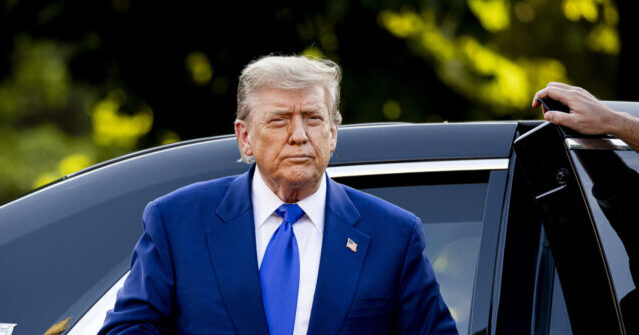President Donald Trump on Wednesday announced that the United States has reached a new trade agreement with Vietnam, outlining key terms that would impose a 20 percent tariff on Vietnamese goods, a 40 percent tariff on transshipped products, and full tariff-free access for American exports to the Vietnamese market.
The deal, unveiled just days before a 90-day suspension of the administration’s reciprocal tariffs was set to expire, appears to formalize elements of Trump’s longstanding push to balance trade relationships by linking tariff rates to trade imbalances.
In a follow-up message posted on Truth Social, Mr. Trump said the agreement followed a conversation with To Lam, General Secretary of the Communist Party of Vietnam. Trump described To Lam as “highly respected” and called the exchange “an absolute pleasure.”
According to the post, Vietnam has agreed to a 20 percent tariff on all goods it exports to the U.S. and a 40 percent tariff on goods transshipped through Vietnam from other countries, a practice that has drawn increasing scrutiny from U.S. trade officials.
In return, the United States will be granted full access to Vietnam’s markets with zero tariffs on U.S. goods, a concession Trump described as unprecedented. “Vietnam will do something that they have never done before, give the United States of America TOTAL ACCESS to their Markets,” the former president wrote.
Mr. Trump singled out large vehicles, including SUVs, as a potential American export to Vietnam, calling them “a wonderful addition to the various product lines within Vietnam.”
The U.S. recorded a $104.6 billion goods deficit with Vietnam in 2023, importing $114.4 billion and exporting just $9.8 billion. That gap widened to $123.5 billion in 2024, according to trade data.
Vietnam ran a $24.8 billion trade surplus overall last year, exporting $405.5 billion while importing $380.8 billion. But the country also recorded an $82.8 billion trade deficit with China, importing $144 billion in goods. The U.S. has raised concerns that some of these Chinese goods may be routed through Vietnam to evade tariffs—known as transshipping.
The structure of the announced deal suggests an attempt to discourage this practice while promoting American exports.
Earlier:
President Donald Trump on Wednesday announced via Truth Social that the United States has struck “a trade deal with Vietnam,” providing no further detail beyond pledging that “big announcements coming.”
The surprise declaration comes on the eve of the expiration of a 90‑day suspension of planned U.S. reciprocal tariffs on Vietnamese imports.
The Trump administration’s reciprocal tariff policy, initiated earlier this year, imposed a sweeping 46 percent tariff on goods from Vietnam. The policy was designed such that any nation running a large trade surplus with the U.S. would face equal‑sized levies. That tariff pause is set to lapse within days, reigniting pressure unless the deal brings clarity.
In 2023, America recorded a goods deficit of approximately $104.6 billion, with U.S. exports to Vietnam at about $9.8 billion and imports at $114.4 billion. Last year, that grew to a trade deficit of $123.5 billion.
While Vietnam ran a robust trade surplus of $24.8 billion in 2024, fueled by $405.5 billion in exports and $380.8 billion in imports, its trade deficit with China was $82.8 billion. As a result, dollars from the U.S. that finance purchases of goods from Vietnam get recycled into purchases of goods by Vietnam from China. Vietnam imported $144 billion of goods from China last year.


















